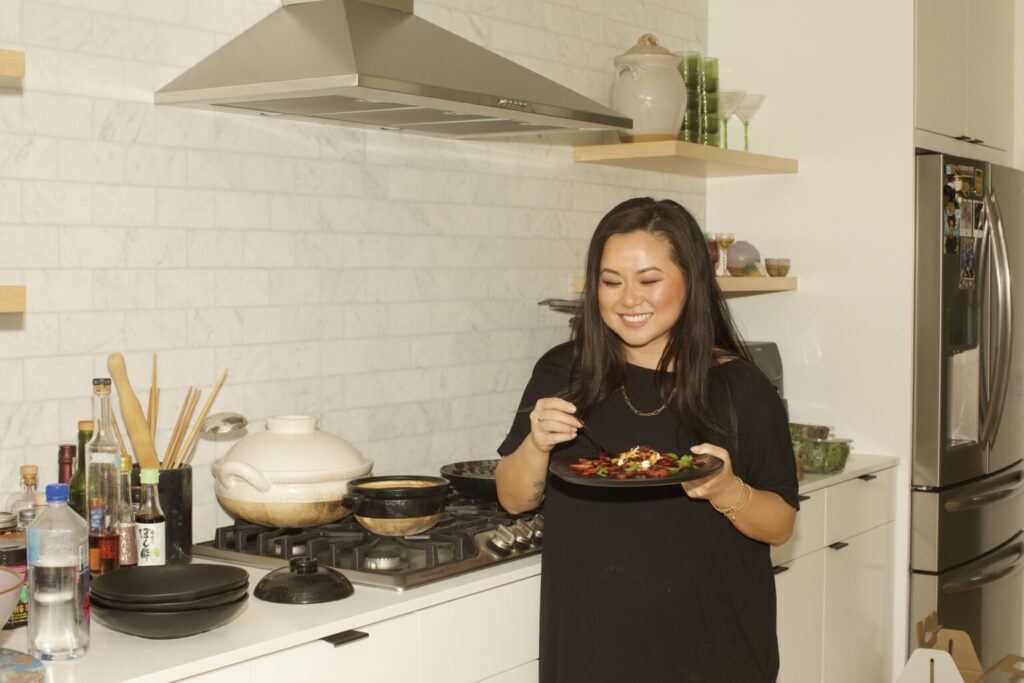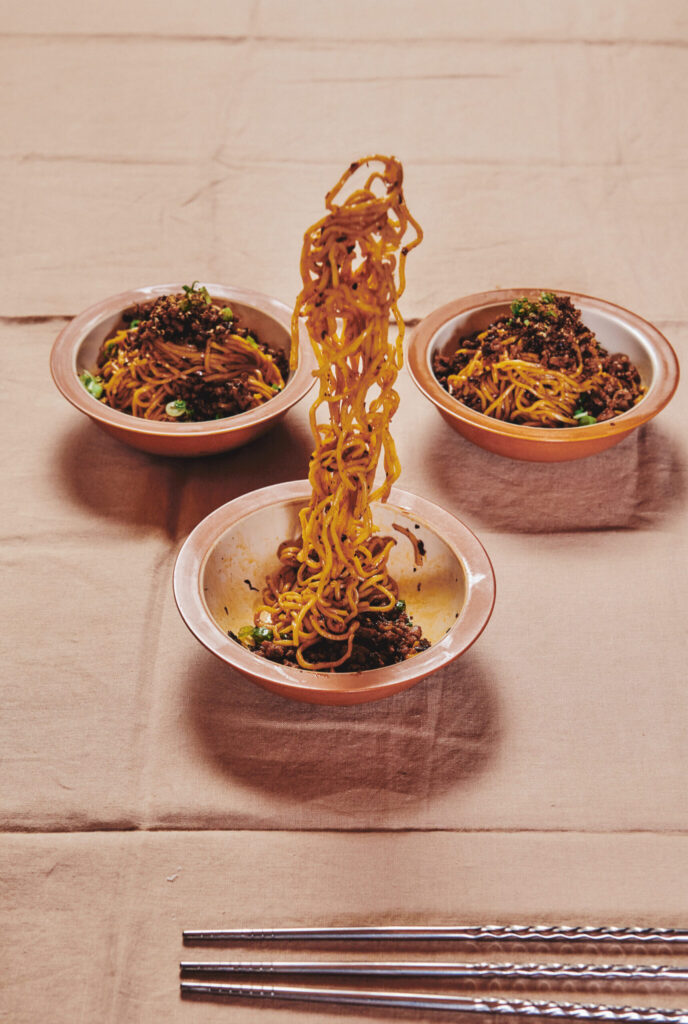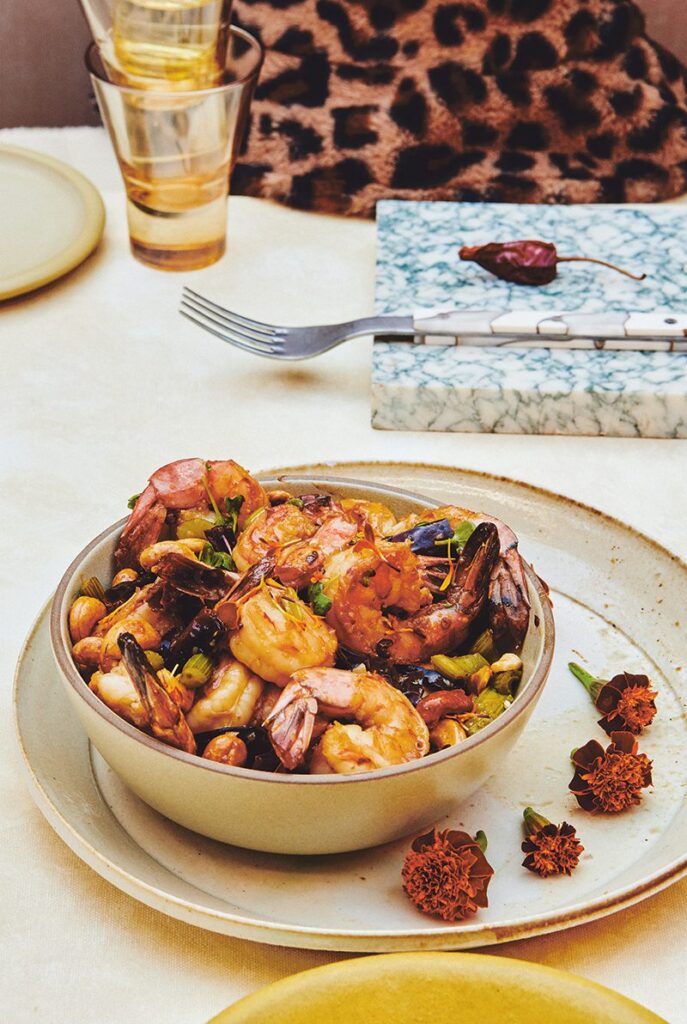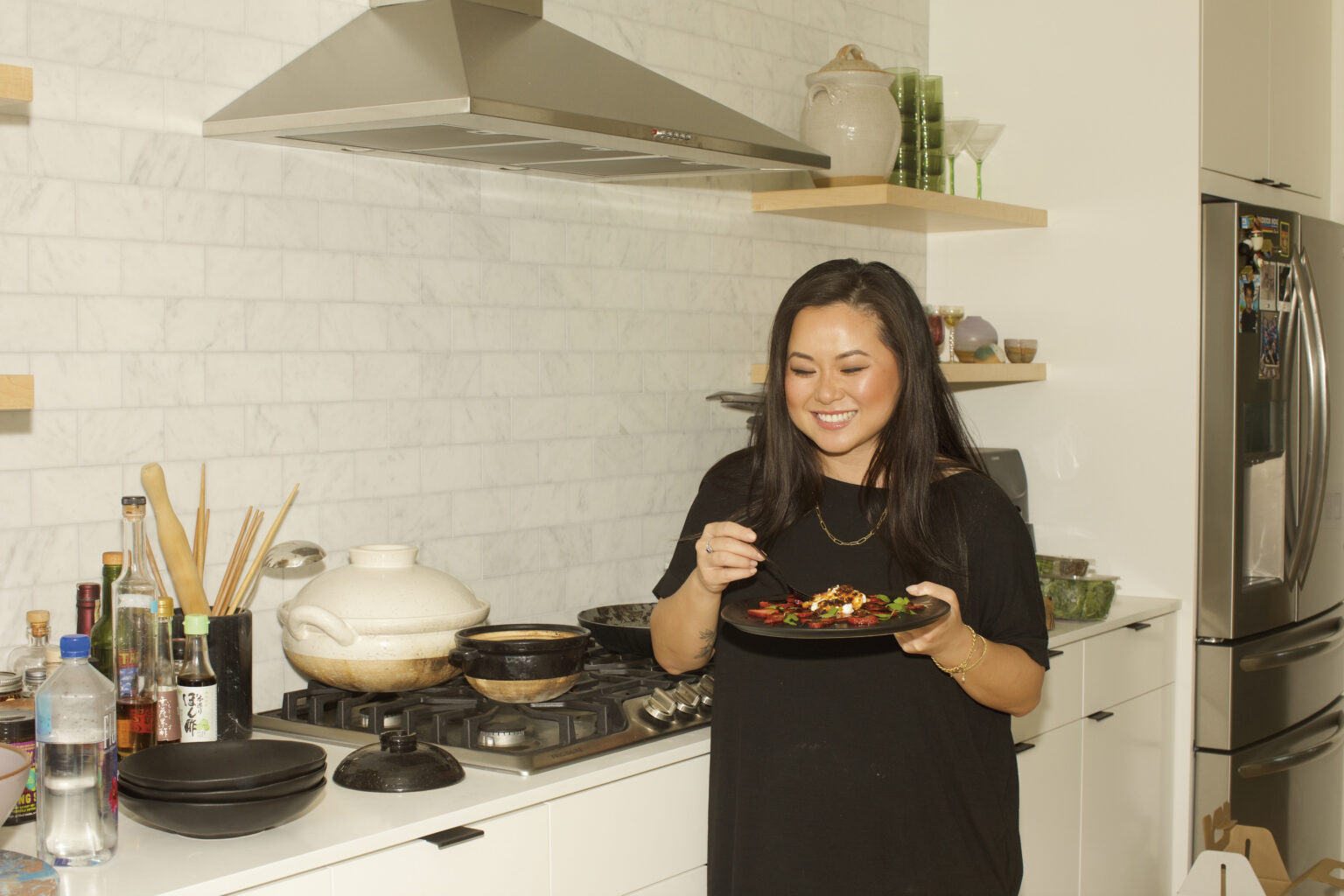
The Foodie’s Ultimate Self-Expression
By Jing Gao
Like anything deeply personal, it’s hard to describe chili crisp in one sentence. It’s layered, nuanced, crispy and spicy. Something you feel on your tongue as much as you taste. Do you prefer more oil? More crunch? More savoury, funky, sweet, or numbing? Chili crisp is the people’s condiment: entirely democratic and entirely equalizing. But then again, like anything deeply personal, it’s inherently easy for me to talk about chili crisp because it’s been at the core of my existence for a decade.
Like me, chili crisp was born in China. A condiment made of electrifying spices and peppers, it’s a marriage of texture and flavour and heat. Chili crisp provides the basis of a dish, as much as it is a complement to it.
Like a true Sichuan local, I’ve added chili crisp to everything for as long as I can remember. I love its punch and mystery. I’ve always found Chinese chili sauces more complex and savoury compared to their hot sauce counterparts in the West. Discovering the sheer variation in styles and flavours of chili crisp has astounded me.

In Guizhou province, where the stalwart mass market brand Laoganma is made, a popular variant includes lacto-fermented chili peppers. In Sichuan, the leading flavour profile is often mala, which can be spicy and numbing. Elsewhere, you can find varieties with all manner of crunch from fried soybeans to nuts and seeds.
But it was always the homemade variations that tasted best. The ones that are packed with high-quality ingredients, without the fillers or shortcuts that commercial ones contained. My family has never stocked any store-bought jars in the fridge, opting instead to craft their own, glistening red elixirs, slow cooked with aged, fermented fava bean paste, painstakingly sourced chilies, Sichuan pepper, and sometimes with homemade beef jerky and mushrooms mixed in.
I took for granted that the flavours at home were always going to be more diverse and superior to something store-bought. When I started cooking, I really began to appreciate the specificity of ingredients. Not all chilies are made the same. Even within the same variety (of which there are thousands), there are numerous grades of quality—and that’s just the chilies. This is why for a complex sauce with dozens of ingredients, it is often impossible to replicate the same flavours using food items sourced even a town away. In this way, chili crisp is the ultimate vessel for self-expression.

I started making my own chili crisp from scratch—for myself, my friends, and for the customers at my restaurant and pop-up supper clubs. I use the highest-quality erjingtiao chilies, known for their fragrance and luster, mountain-grown tribute peppers (so-called because they are so rare they were given exclusively as a tribute to the emperor), organic cold-pressed oils, and small-batch fermented black beans. I learned, too, that the element of time is also an ingredient…sometimes the most important one. The time and care it takes for preserved black beans to achieve their depth and their funk, and the time it takes for all the elements to meld together during cooking, are crucial elements.
I have added crunchy aromatics like golden-fried garlic and shallots, an influence from southern China, and mushroom and seaweed powders to add umami and depth of flavour without using shortcuts. You cannot fake the good stuff.
Variations of oil-based chili sauces have evolved from cultures throughout the world, each holding its own heritage. Some of my favourites include bright Calabrian chili pastes from Italy, sambal oelek from Southeast Asia, and smoky salsa machas from Mexico. Each has its own draw and application, and I keep my pantry well stocked with all of them.
As my sauces gained popularity, I was inspired to share Sichuan flavours and to shine a light on the nuanced and complex roots of this culinary heritage. From the early days of a Kickstarter campaign, to selling in thousands of stores, this humble sauce has carried my message far and wide. For me, chili crisp is more than a condiment. It has carried forth my identity and helped others find and honour theirs.

KUNGPAO SHRIMP (4 SERVINGS)
Kungpao, a classic flavour in Sichuan cuisine, is characterized by a balance of spicy, savoury, sour, and sweet tastes. The sauce is versatile and can be applied to many canvases, most famously on chicken. I’ve made everything from kungpao eel to venison to tofu, but the version I frequently make is shrimp, since it comes together quickly. Take caution when you fry the dried chilies. Depending on how hot your chilies are, the room and your lungs might fill with smoke, so try not to take any deep breaths and definitely turn on the exhaust fan and open windows.
INGREDIENTS
2 Tbsp neutral oil
5 or 6 pieces dried chilies, cut into 1 inch / 2.5cm segments
1 tsp whole Sichuan pepper
1 Tbsp minced ginger
1 Tbsp minced garlic
3 scallions, white parts only, cut into ½ inch / 1.3cm segments
2 celery stalks, cut into ½ inch / 1.3cm segments
1 lb / 450g shrimp, peeled, tails on
½ cup / 120ml Kungpao Sauce (see recipe on right)
½ cup / 70g roasted cashews or peanuts
Microgreens or edible flowers for garnish (optional)
White rice for serving
KUNGPAO SAUCE (make ahead)
With this sauce in tow, you’ll be able to confidently “kungpao” anything. This is enough for a pound of protein. Makes ⅓ cup.
2 Tbsp granulated sugar
2 Tbsp chicken stock or water
2 tsp Shaoxing wine
2 tsp light soy sauce
1 tsp dark soy sauce
2 Tbsp black vinegar
½ tsp cornstarch
In a small bowl, mix all ingredients together until well-combined. Transfer to an airtight
container and store in the refrigerator for up to 2 weeks. When ready to use, make sure to mix well again before cooking.
METHOD
- In a wok or frying pan, over high heat, add the oil and heat until smoking. Add the chilies and Sichuan pepper and fry quickly so they don’t burn, 10 to 20 seconds. Add the ginger, garlic, and scallions and fry until fragrant. Add the celery and shrimp and flash-fry for about 3 minutes, until the shrimp start to turn pink.
- Pour in the sauce, stirring to make sure it coats all the ingredients evenly for 1 minute. The sauce will thicken as soon as it hits the heat, so move quickly here. Stir in the cashews at the very end before transferring to a serving platter.
- Garnish with the microgreens (if using) and serve immediately with rice.

